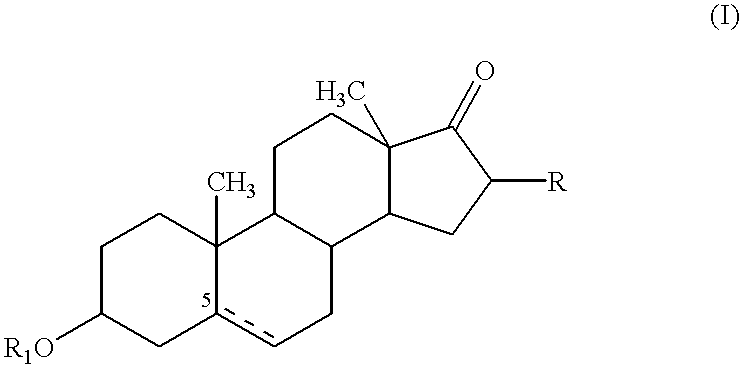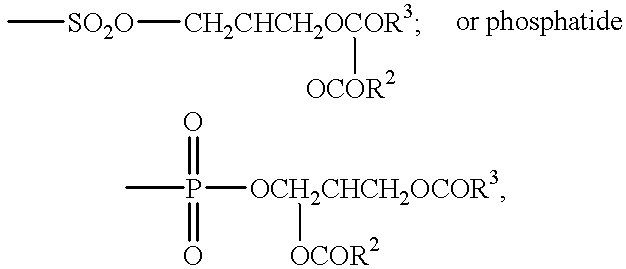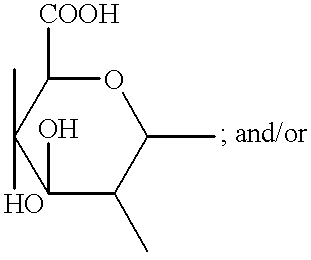Compositions & formulations with an epiandrosterone or a ubiquinone & kits & their use for treatment of asthma symptoms & for reducing adenosine/adenosine receptor levels
a technology of epiandrosterone and ubiquinone, which is applied in the direction of phosphorous compound active ingredients, biocide, animal husbandry, etc., can solve the problems of uncompetitive inhibition, high health care costs, and inability to understand the underlying causes of asthma symptoms
- Summary
- Abstract
- Description
- Claims
- Application Information
AI Technical Summary
Problems solved by technology
Method used
Image
Examples
examples 1 and 2
Effects of Folinic Acid and DHEA on Adenosine Levels In Vivo
[0045] Young adult male Fischer 344 rats (120 grams) were administered dehydroepiandrosterone (DHEA) (300 mg / kg) or methyltestosterone (40 mg / kg) in carboxymethylcellulose by gavage once daily for fourteen days. Folinic acid (50 mg / kg) was administered intraperitoneally once daily for fourteen days. On the fifteenth day, the animals were sacrificed by microwave pulse (1.33 kw, 2450 MHZ, 6.5 s) to the cranium, which instantly denatures all brain protein and prevents further metabolism of adenosine. Hearts were removed from animals and flash frozen in liquid nitrogen with 10 seconds of death. Liver and lungs were removed en bloc and flash frozen with 30 seconds of death. Brain tissue was subsequently dissected. Tissue adenosine was extracted, derivatized to 1, N6-ethenoadenosine and analyzed by high performance liquid chromatography (HPLC) using spectrofluorometric detection according to the method of Clark and Dar (J. of Neu...
example 3
Effect of CoQs & an EA on In Vitro NADPH Levels
[0047] Glocose-6-Phosphate Dehydrogenase (G6PD) is an important enzyme that is widespread in mammals, and is involved in the conversion of NADP to NADPH, thereby increasing NADPH levels. An inhibition of the G6PD enzyme, thus, will be expected to result in a reduction of cellular NADPH levels, which event, in turn, will be expected to inhibit pathways that are heavily dependent on NADPH. One such pathway, the so-called One-Carbon-Pool pathway, also known as the Folate Pathway, is directly involved in the production of adenosine by addition of the C.sub.2 and C.sub.8 carbon atoms of the purine ring. Consequently, the inhibition of this pathway will lead to adenosine depletion.
[0048] The present invention is broadly applicable to Epiandrosterones (EAs) and Ubiquinones (CoQs). The description of the pathways involved in the present invention are described in the Background section. The present experiment was designed to show that one EA an...
PUM
| Property | Measurement | Unit |
|---|---|---|
| Fraction | aaaaa | aaaaa |
| Fraction | aaaaa | aaaaa |
| Dimensionless property | aaaaa | aaaaa |
Abstract
Description
Claims
Application Information
 Login to View More
Login to View More - R&D
- Intellectual Property
- Life Sciences
- Materials
- Tech Scout
- Unparalleled Data Quality
- Higher Quality Content
- 60% Fewer Hallucinations
Browse by: Latest US Patents, China's latest patents, Technical Efficacy Thesaurus, Application Domain, Technology Topic, Popular Technical Reports.
© 2025 PatSnap. All rights reserved.Legal|Privacy policy|Modern Slavery Act Transparency Statement|Sitemap|About US| Contact US: help@patsnap.com



